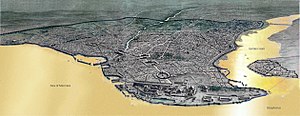 |
| Pelé, 1956. |
Edson Arantes do Nascimento (Brazilian Portuguese: [ˈɛtsõ (w)ɐˈɾɐ̃tʃiz du nɐsiˈmẽtu]; born 23 October 1940),[1]known as Pelé (Brazilian Portuguese: [pe̞ˈlɛ]), is a retired Brazilian professional footballer who played as a forward. He is widely regarded as the greatest player of all time. Pelé has also been known for connecting the phrase "The Beautiful Game" with football. In 1999, he was voted World Player of the Century by the International Federation of Football History & Statistics (IFFHS). That year, France Football asked their former Ballon d'Or winners to choose the Football Player of the Century; they selected Pelé. In 1999, Pelé was elected Athlete of the Century by the IOC. That year, Time named him in their list of 100 most influential people of the 20th century. In 2013 he received theFIFA Ballon d'Or Prix d'Honneur in recognition of his career and achievements as a global icon of football.
According to the IFFHS, Pelé is the most successful league goal-scorer in the world, with 541 league goals. During his career, Pelé scored 1281 goals in 1363 games, which included unofficial friendlies and tour games. He was listed in the Guinness World Records for most career goals scored in football for this. During his playing days, Pelé was for a period the best-paid athlete in the world.[8] In Brazil, he is hailed as a national hero for his accomplishments in football and for his outspoken support of policies that improve the social conditions of the poor. In 1961, Brazil President Jânio Quadros had Pelé declared a national treasure. During his career, he became known as "The Black Pearl" (A Pérola Negra), "The King of Football" (O Rei do Futebol), "The King Pelé" (O Rei Pelé) or simply "The King" (O Rei).[9]
Pelé began playing for Santos at age 15 and the Brazil national football team at 16. During his international career, he won three FIFA World Cups: 1958, 1962 and 1970, being the only player ever to do so. Pelé is the all-time leading goalscorer for Brazil with 77 goals in 91 games. At club level he is also the record goalscorer for Santos, and led them to the 1962 and 1963 Copa Libertadores. Pelé's "electrifying play and penchant for spectacular goals" made him a star around the world, and his club team Santos toured internationally in order to take full advantage of his popularity.[10] Since retiring in 1977, Pelé has been a worldwide ambassador for football and has made many acting and commercial ventures. In 2010, he was named the Honorary President of the New York Cosmos.







